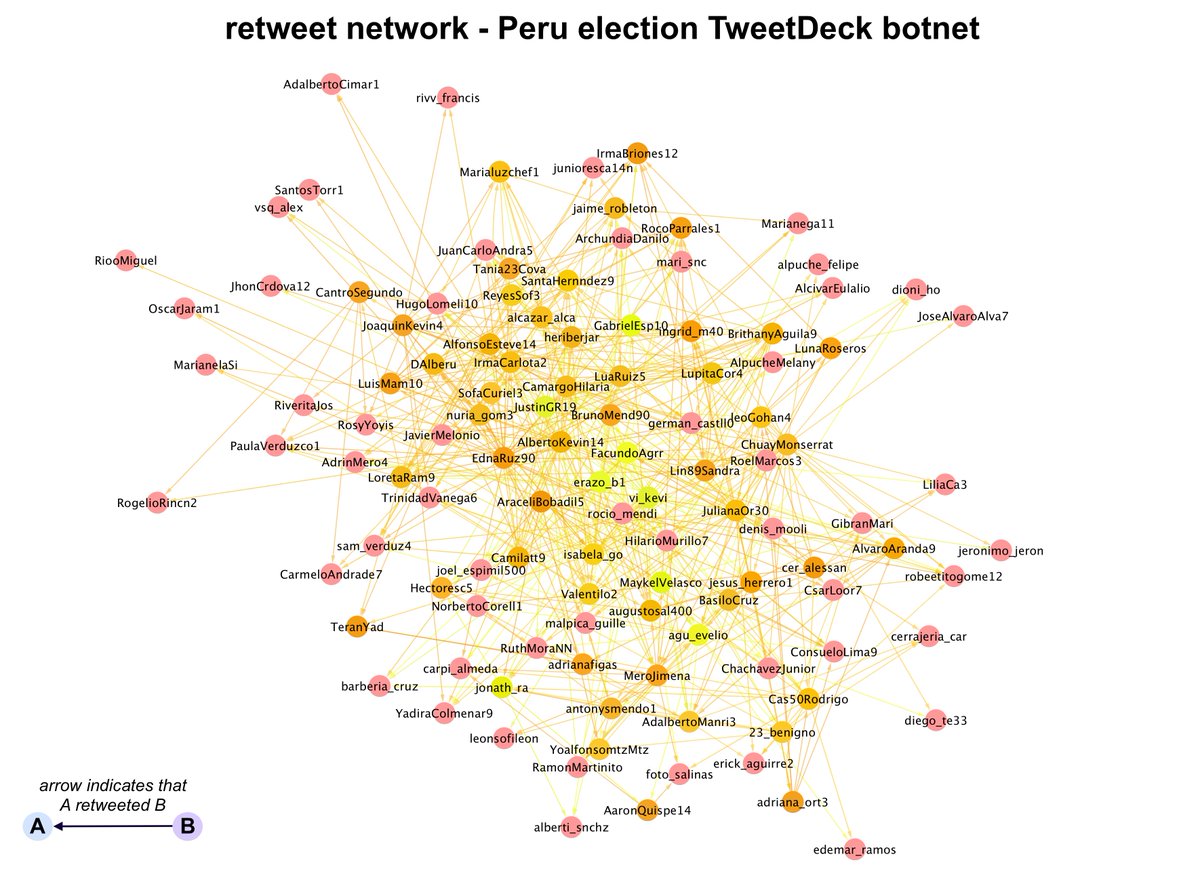Peru's next president will be chosen in a runoff election on June 6th, and a network of recently-created accounts (many with stolen profile pics) is expressing its astroturfed preference for Keiko Fujimori over Pedro Castillo via TweetDeck. #FridayAstroturf
cc: @ZellaQuixote

cc: @ZellaQuixote


This network consists of 114 Spanish-language accounts created in batches between March 26th and April 30th, 2021. Thus far, these accounts have posted almost all of their content via TweetDeck (6989 of 7101 tweets, 98.4%). 







These accounts tweet about the upcoming election, a mix of tweets promoting right-wing candidate Keiko Fujimori and tweets attacking left-wing candidate Pedro Castillo. They retweet each other's political content frequently, along with occasional retweets of large accounts. 





The accounts also post repetitive non-political tweets. These are a mix of relatively mundane tweets and follower growth tweets. As always, take the English translations of the tweets with a grain of salt, as machine translation sometimes gets things quite wrong. 

The hashtags posted by this botnet reflect these themes, with political hashtags related to the upcoming election as the primary theme and follower growth hashtags turning up prominently as well. 

One final note: it may be a coincidence, but we found two similar-looking batch-created TweetDeck-based bot/sock networks tweeting about Ecuador's recent presidential election. Here are threads on those networks:
https://twitter.com/conspirator0/status/1389041049591484416
https://twitter.com/conspirator0/status/1377447246170574850
We did some further exploration of recently-created accounts that tweet in Spanish via TweetDeck, and found a few more groups of batch-created accounts:
8 accounts, location set to Guatemala
23 accounts, location set to República Dominicana
27 accounts, location set to Perú



8 accounts, location set to Guatemala
23 accounts, location set to República Dominicana
27 accounts, location set to Perú




Many of these batch created accounts have follow relationships (usually multiple) with the Perú election botnet described earlier in this thread, as well as with each other. Eight of the accounts with their location set to República Dominicana form a separate follow network. 

Although the Guatemala and República Dominicana batch-created TweetDeck accounts have yet to tweet anything political, they have tweeted verbatim copies of some of the same "filler" tweets as the Perú election botnet, a possible sign that they are part of the same operation. 

• • •
Missing some Tweet in this thread? You can try to
force a refresh































